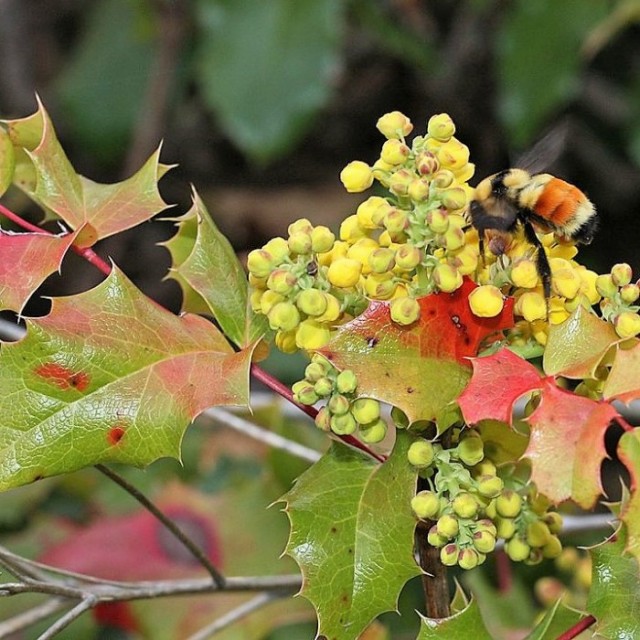COMMON NAME
Oregon grape
SCIENTIFIC NAME
Berberis aquifolium
ALSO KNOWN AS
Mahonia aquifolium, Holly-leafed barberry
Plant family
Barberry (Berberidaceae)
Plant group
Broadleaf Evergreens
Oregon grape is an evergreen shrub that can grow up to 6.5 feet tall by 5 feet wide. It often forms clonal patches with its slowly creeping rhizomes.
221 reports
68+
OBSERVERS
221+
OBSERVATIONS
Identification hints
The height of Oregon grape is easily differentiates it from Creeping barberry (B. repens). The leathery leaves resemble holly and the stems and twigs have a thickened, corky appearance.
Did you know?
This shrub is the state flower of Oregon. The small, dark-purple fruits, which are quite tart, are included in smaller quantities in the traditional diets of indigenous people of the Pacific Northwest, mixed with salal or another sweeter fruit.
DISTRIBUTION IN TH U.S.
California
,
Idaho
,
Indiana
,
Kentucky
,
Massachusetts
,
Michigan
,
Montana
,
New Jersey
,
New York
,
Ohio
,
Oregon
,
Vermont
,
Washington
HABITAT
Oregon grape is native to the Pacific Northwest in shady woodland habitats. It is a common horticultural plant that, in some parts of the northeastern US, has escaped cultivation and begun to naturalize outside its native range.
ATTRIBUTES
Leaves
Leaves of Oregon grape are up to one foot long, and they are composed of several leaflets (compound leaves). The leaflets have no leaf stalks (sessile) and they have spiny toothed leaf margins. The foliage often turns reddish or purplish in the fall.
Flowers
Yellow flowers are borne in dense, 2-3" long clusters.
Fruits
Ripe fruits are dark dusty blue berries, which lend this plant its common name "Oregon grape."
Bloom Time
Blooms in early springtime.
See Menu
- 2021 Chicago Botanic Garden. All Rights Reserved.
-
Creative Commons
BY-NC-SA 4.0 - Terms of Use
- Privacy Policy
- Data Sharing and Citation Policies
- 2021 Chicago Botanic Garden. All Rights Reserved.



